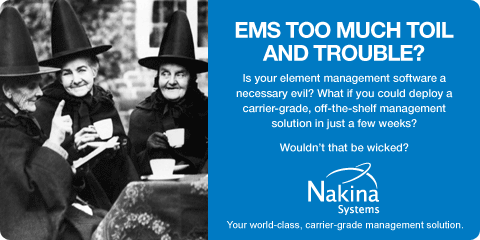
article page
| 1
| 2
| 3
| 4
| 5
|
is special, then nothing is special, once again adding no value to earn higher rates. Furthermore, the costs inherent in applying differing levels of quality to each transaction can be significant. Comcast attempted to use traffic throttling to police network quality when bit torrent traffic clogged their network. This practice was slammed by customers, market, analysts, and regulators. No way will the public and regulators let providers throttle "by kind of service" to stop distribution of movies, TV, and music from competitive sources. Comcast is now turning to a charging model based on volume. We expect more of this and see this as a legitimate application of Pay for Use.
|
|
In the world of the Internet, such a drawing is not network architecture, it is a misleading cartoon. |
|


"Peering is voluntary interconnection of administratively separate Internet networks for the purpose of exchanging traffic between the customers of each network. The pure definition of peering is settlement-free or "sender keeps all," meaning that neither party pays the other for the exchanged traffic, instead, each derives revenue from its own customers."[Wikipedia]
|
|
|
|

These OTT service providers could be the very biggest customers of telco, after all, they don't want to run networks, they want to sell their services. But this threat of degraded service, or even outright blocking of access to their web site, is pushing these "super large" customers to explore other options. In trying to figure out how to get out from under these threats, some will undoubtedly become competitors to the service providers.
It is not just predatory service provider practices (or should we say, their quest for revenue magic?) that are driving towards a potential crisis. Some is caused by the "Unintended Consequences" of the regulation of the Internet and, specifically, the hard to grasp concept of today's Peering arrangements. These also represent a loss of revenue for some service providers.
Peering Inside Peering
There is a lot of misunderstanding about Internet peering and the establishment of tiers of peers. Tiers are not gradated levels of size in the Internet, even if there is a correlation of size and the tier one peers at. Tiers are groupings of equals or rather equivalents.
|
|

Networks are often illustrated as connection points with a cloud in the middle. For a very long time, the telcos owned pretty much everything in the illustration. In the world of the Internet, such a drawing is not network architecture, it is a misleading cartoon. With the Internet, traffic enters via ISPs. It transits various elements in the access network until it reaches a peering point and then skips to a different network. It is not a cloud; it is truly a web of backbone lines between cluster zones where traffic is exchanged. The network as cloud in the middle is an urban myth.
"In [Internet] Peering: "like" carriers of Internet traffic interconnect without the exchange of fees, as long as the traffic in and out are equivalent. The "Tier Hierarchy" is used to understand political and economic motivations of networks in relationship with whom and how they peer. In theory, "Although there is no go-to authority which has defined the "tiers" of Internet networks, the most common definition [of Tier 1] is: A network that can reach every other network on the Internet without purchasing IP transit or paying settlements. By this definition, a Tier 1 Network is a Transit-Free network. But not all Transit-Free Networks are Tier 1 Networks. It is possible to become transit free by paying for peering or agreeing to settlements." [Wikipedia]
article page
| 1
| 2
| 3
| 4
| 5
| |
|





